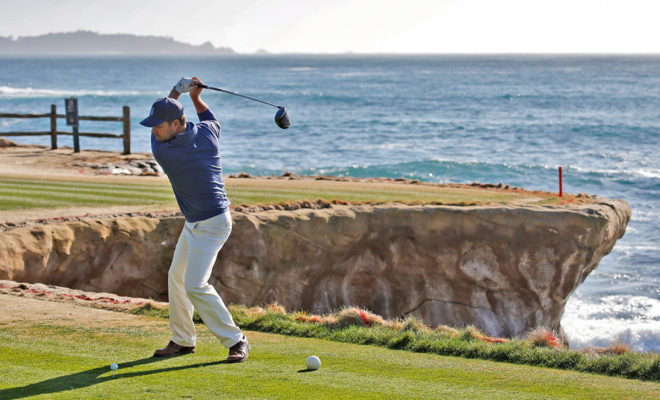View from the Top: Putting when the Bars All Align

Golfers know that the putter they rely on most looks right to their eye. While the general shape is key, part of feeling good about that visual acuity — subliminal or not — pertains to the alignment lines and bars behind the putter face. With many golfers, it’s just a matter of having something back there that steers them on the proper path. Odyssey made a fortune on its 2-Ball models over the years, placing two circles behind the face so that when a golfer looks down over a putt, the ball makes for a third circle in perfect alignment with the stroke path. But the task can also be mastered with something as simple as one line in the flange, or several. Or with rear wings that kind of frame the path. It all depends on a golfer’s comfort level: Some players — regardless of their skill level — prefer a simple, non-busy look at address while other welcome all the help they can muster. “The overwhelming majority of golfers will benefit from alignment aids,” says putter maker Sean Toulon. “Alignment lines are very important. Nowadays, most competitive and professional golfers match up their putter alignment line with a sharpie line on their ball, to help visualize the desired line and hit that target line more often.” Perhaps one of the latest models will catch your eye.
Odyssey’s White Hot RX #7 ($160) is a progressive mallet with weighted alignment wings, double-bend shaft and full-shaft offset. The wings each sport a simple black line, and are flanked by three simple dots on the top bar — setting you up for success.
The flange on TaylorMade’s large-headed, high-MOI OS Monte Carlo mallet ($219) includes a raised red-white-red sight line that contrasts the gray body color. Company officials claim this makes the putter easier to align than a simple blade.
Scotty Cameron’s Newport M1 mid-mallet ($410) has a visually striking, raised criss-cross on its flange, for enhanced alignment. A single piece of lightweight aluminum comprises the face inlay, wraps down and around to form the sole midsection, and pops through the flange to create the sightline field.
Perhaps the simplest alignment cue is none at all. And that’s just what you’ll find in PING’s new TR 1966 Anser ($162.50), a modernized version of the 50-year-old original.
The topline of Evnroll’s ER5 ($329) has two small, unpainted dots on either side of the sightline. This provides reference for consistent lie angle positioning, while also helping with alignment on breaking putts: Position the ball in front of the toe-side dot on right-to-left putts, and in front of the heel-side dot on left-to-righters — to keep putts on the high side of the target line.
One rear, contrasting line accomplishes the alignment feat on Toulon Design’s Madison ($399), an iconic style blade with a symmetrical look from the address position.











